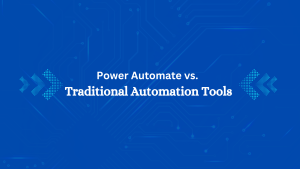
Automation is the process of using technology, such as software, machinery, and other systems, to perform tasks and processes with minimal or no human intervention. Its primary goals are to increase efficiency, improve accuracy, reduce costs, and free up human resources for more complex and creative tasks. Automation is widely used in various industries, including manufacturing, IT, finance, and service sectors.
What is Process Automation?
Process automation is the use of technology to execute recurring tasks or processes in a business where manual effort can be replaced. It aims to streamline workflows, reduce the need for human intervention, improve efficiency, and ensure consistency in operations. By automating processes, organizations can save time, reduce errors, and increase productivity. Common tools for process automation include software applications, robotic process automation (RPA), and artificial intelligence (AI) systems.
Key reasons why Process Automation fails.
- Lack of Clear Objectives: Without well-defined goals and expectations, it’s difficult to measure success or ensure the project meets business needs.
- Inadequate Planning and Preparation: Failing to thoroughly plan and prepare for automation can lead to missed requirements, unrealistic timelines, and resource shortages.
- Insufficient Stakeholder Engagement: If key stakeholders, including end-users, are not involved in the project, the solution may not meet their needs or gain necessary support.
- Poor Change Management: Automation often requires changes in workflows and job roles. If these changes are not well-managed, employees may resist or not adapt well to the new system.
- Lack of Expertise: Without the right technical skills and experience, the automation solution may be poorly designed or implemented, leading to technical issues and inefficiencies.
- Overlooking Process Analysis: Automating a poorly designed process will not yield the desired benefits. It’s crucial to optimize the process before automating it.
- Insufficient Testing and Maintenance: Failing to thoroughly test the automated processes can result in errors and disruptions. Continuous maintenance is also necessary to address any issues and make improvements.
- Ignoring Data Quality: Automation relies on accurate and consistent data. Poor data quality can lead to errors and inefficiencies in automated processes.
- Lack of Scalability: An automation solution that cannot scale with the business can quickly become obsolete or require costly rework.
How to overcome challenges in Process Automation?
- Define Clear Objectives and Scope
- Set Specific Goals: Clearly outline what the automation project aims to achieve, such as reducing costs, improving accuracy, or increasing speed. These goals should be measurable and aligned with overall business objectives.
- Scope Management: Define the boundaries of the project to prevent scope creep. Identify which processes are to be automated and establish criteria for success.
- Thorough Planning and Preparation
- Detailed Roadmap: Develop a comprehensive project plan that includes timelines, milestones, resource allocation, and risk management strategies.
- Resource Assessment: Ensure that you have the necessary resources, including skilled personnel, technology, and budget, before starting the project.
- Engage Stakeholders Early and Often
- Inclusive Involvement: Involve all relevant stakeholders, including management, IT, and end-users, from the outset. Their input can provide valuable insights and help in gaining buy-in.
- Regular Communication: Maintain open lines of communication throughout the project to keep stakeholders informed and engaged.
- Effective Change Management
- Change Management Plan: Develop a plan to manage the changes automation will bring. This should include strategies for training, communication, and support to help employees adapt.
- Training Programs: Provide comprehensive training to ensure that users understand how to work with the new automated processes.
- Build Expertise and Leverage External Knowledge
- Skilled Team: Assemble a team with the necessary technical and process expertise. This might include hiring new talent or upskilling existing employees.
- Consult External Experts: When necessary, seek advice from consultants or experts in process automation to guide the project.
- Optimize Processes before Automating
- Process Analysis: Conduct a thorough analysis of the processes you plan to automate. Identify inefficiencies and areas for improvement.
- Process Redesign: Redesign processes to optimize performance before implementing automation. This ensures that you are not automating inefficiencies.
- Comprehensive Testing and Continuous Maintenance
- Rigorous Testing: Perform extensive testing of the automated processes in a controlled environment before full deployment. This helps identify and fix issues early.
- Ongoing Maintenance: Establish a maintenance plan to regularly review and update the automated systems. This ensures they continue to function correctly and adapt to any changes in the business environment.
- Accurate Cost Estimation and Budgeting
- Detailed Budgeting: Create a detailed budget that accounts for all potential costs, including initial implementation, training, maintenance, and potential contingencies.
- Monitor Expenses: Regularly track and review expenses to ensure the project stays within budget.
- Ensure Data Quality and Integration
- Data Cleaning: Ensure that the data used in the automation process is accurate, complete, and consistent. Clean and standardize data before implementation.
- Seamless Integration: Ensure that the automation tools integrate smoothly with existing systems and data sources. This prevents data silos and ensures seamless operation.
- Design for Scalability and Flexibility
- Scalable Solutions: Choose automation tools and technologies that can scale with your business. This ensures that the solution can grow and adapt as your needs change.
- Flexible Architecture: Design the system to be flexible and adaptable, allowing for easy modifications and updates as new requirements arise.
Let’s have a look at Recent Trends in Process Automation:
- AI and Machine Learning Integration: AI and machine learning are being increasingly integrated into process automation to enhance decision-making, predict outcomes, and improve efficiency. This includes predictive maintenance, anomaly detection, and intelligent process automation (IPA).
- Robotic Process Automation (RPA): RPA continues to be a major trend, with more sophisticated bots that can handle complex tasks and integrate with various systems. The focus is on scaling RPA across the enterprise and integrating it with other technologies like AI and machine learning.
- Intelligent Document Processing (IDP): IDP uses AI to automate the processing of unstructured data from documents, emails, and other sources. This helps in streamlining data entry and improving accuracy.
- Hyper automation: This involves the use of multiple technologies such as RPA, AI, machine learning, and analytics to automate as many business processes as possible. Hyper automation aims to create a more comprehensive and efficient automation strategy.
- Low-Code/No-Code Platforms: These platforms allow business users to create automation workflows without extensive programming knowledge. This democratizes process automation and accelerates digital transformation initiatives.
- Process Mining and Discovery: Process mining tools help organizations understand and analyze their existing processes to identify automation opportunities. These tools provide insights into process inefficiencies and bottlenecks.
- Cloud-Based Automation Solutions: Cloud-based automation solutions offer scalability, flexibility, and reduced infrastructure costs. They also enable remote work and collaboration, which is increasingly important in today’s business environment.
Conclusion:
While the path to process automation might be difficult, knowing and overcoming these barriers helps pave the road for effective adoption.
Businesses can address these challenges by prioritizing change management, phased deployment, seamless integration, skill development, data security, process definition, and transparent measurement.
Embracing these solutions not only ensures a smoother transition but also positions organizations for long-term success in an increasingly automated world.






No comment yet, add your voice below!